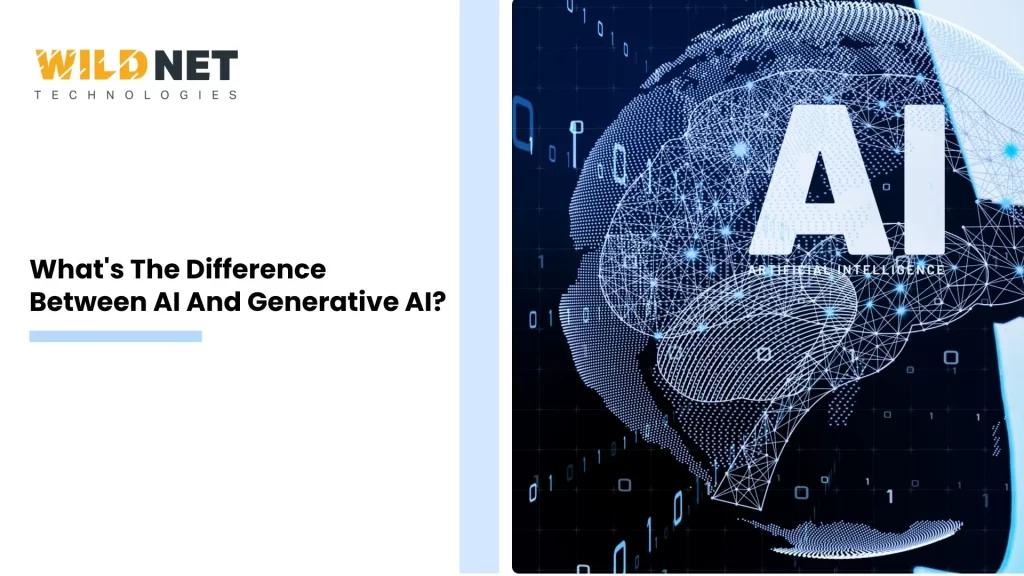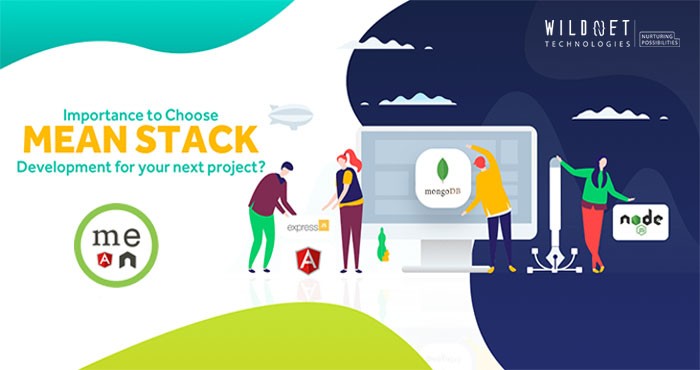Artificial Intelligence (AI) and Generative AI frequently surface in discussions about technology and innovation. However, their meanings and implications can often be misunderstood or conflated. Understanding these concepts is crucial, especially as they continue to shape various aspects of our daily lives and industries.
This article aims to demystify these buzzwords by breaking down their definitions, applications, and global impact.
AI, or Artificial Intelligence, is a branch of computer science focused on creating systems that can perform tasks typically requiring human intelligence. These tasks include decision-making, problem-solving, understanding natural languages, and recognizing patterns. AI systems are designed to learn from experience, adjust to new inputs, and perform human-like tasks. The goal is not just to automate processes but to enhance them by providing insights and efficiencies that were impossible before. What’s the difference between AI and Generative AI? While traditional AI focuses on analyzing and interpreting data to make decisions, Generative AI goes a step further by creating entirely new content such as text, images, or audio using learned patterns.
One of AI’s key characteristics is its ability to adapt through machine learning algorithms. These algorithms allow AI to improve over time as it is exposed to more data. This adaptability makes AI particularly valuable in environments where conditions are constantly changing, such as financial markets or healthcare settings.
AI has permeated numerous fields, revolutionizing the way we approach traditional problems:
- Healthcare: AI is instrumental in diagnosing diseases by analyzing medical images or genetic information. It can predict patient outcomes and personalize treatment plans, improving patient care and operational efficiency.
- Finance: AI algorithms optimize trading strategies, manage risk, and enhance fraud detection by identifying unusual patterns in transaction data, thus safeguarding financial systems.
- Customer Service: AI-driven chatbots provide 24/7 support, handling routine inquiries and freeing human agents to deal with more complex issues, improving customer satisfaction.
- Transportation: Self-driving cars use AI for real-time decision-making, interpreting sensor data to navigate roads safely, which could drastically reduce traffic accidents and congestion.
These applications illustrate AI’s potential to streamline operations and innovate across multiple industries, transforming traditional business models and everyday life.
Generative AI is a specialized subset of AI focused on the creative process of generating new content. Unlike conventional AI, which emphasizes decision-making and task automation, Generative AI is about innovation through creation. It learns from existing data to create new, original outputs in text, images, music, or any other medium. This ability to generate novel content has significant implications for industries that rely on creativity and uniqueness.
Generative AI models, such as those based on neural networks, are trained on vast datasets to understand and replicate the underlying structures of the data. This training enables them to produce outputs that are not only new but also contextually relevant and coherent, mimicking the creative processes of humans.
Generative AI is already making significant strides in various creative domains:
- Text Generation: Tools like GPT-3 can draft articles, engage in conversations, or even write code by leveraging extensive language models. These tools assist writers, automate customer service responses, and are even in educational technology to provide personalized learning experiences.
- Image Creation: Applications like DALL-E generate novel images from textual descriptions, offering endless possibilities for design, marketing, and entertainment industries. Artists can use this technology to visualize concepts, or marketers to create unique advertising content.
- Music Composition: AI models capable of composing music allow musicians to explore new genres and styles, providing a collaborative tool that enhances creativity and productivity in music production.
The ability of Generative AI to contribute to creative processes suggests a future where human creativity is augmented by machine intelligence, potentially leading to new forms of artistic expression and innovation. What’s the difference between AI and Generative AI? While AI analyzes data and makes predictions, Generative AI takes it further by producing original content, reshaping how we approach creativity and design.
Having established the foundational concepts of AI and Generative AI, it is important to highlight their distinctions to understand their unique contributions and potential synergies.
- AI: The primary aim is to replicate cognitive functions associated with human intelligence, such as learning, reasoning, and problem-solving. AI seeks to augment human capabilities, making processes more efficient and decisions more informed.
- Generative AI: Focuses on creativity by generating new content based on learned data patterns. It is about producing new, original ideas and artifacts, offering novel solutions and insights that were previously unimaginable.
- AI: Utilizes data primarily for predictive analysis, pattern recognition, and task automation. For instance, AI can analyze customer data to forecast trends or optimize supply chain management.
- Generative AI: Leverages data to learn complex patterns and generate new content. For example, it can study thousands of artworks to create a new piece that reflects a specific style or theme.
- AI: Predominantly used in sectors like healthcare, finance, and customer service to enhance decision-making and operational efficiency. It is also extensively employed in industries like manufacturing and logistics for automation and process optimization.
- Generative AI: Finds its niche in creative industries such as art, literature, and music, where it aids in developing new content and ideas. It is also explored in architecture and gaming for innovative design and storytelling.
Generative AI: Redefining Creativity, Authorship, and Innovation Across Industries
Generative AI is not just a tool for creativity but a transformative force that challenges our understanding of authorship, originality, and creativity in the digital age. Its impact is felt across various sectors, offering new possibilities and reshaping conventional practices.
Generative AI empowers artists, writers, and musicians by providing tools to inspire and expand creative horizons. It can generate drafts, brainstorm ideas, or collaborate with creators to refine their work. Visual arts, for instance, can help artists explore new styles or concepts they might not have considered independently. In literature, it can assist writers in generating plot ideas or character development.
In the business realm, Generative AI automates the production of marketing materials, such as advertisements and product descriptions, which can be highly customized to specific audiences. This capability saves time and resources and ensures content consistently aligns with brand messaging. In product design, Generative AI can simulate various design iterations quickly, helping businesses innovate faster and more efficiently.
Generative AI in Education and Ethics: Unlocking Potential While Navigating Risks
Generative AI holds the potential to revolutionize education by creating personalized learning experiences. It can develop customized learning modules, simulate real-world problem-solving scenarios, and offer interactive tutoring.
This personalization makes learning more engaging and compelling, catering to students’ needs and learning speeds. Additionally, it can be used in corporate training to develop tailored programs that address specific skill gaps.
Despite its promising potential, Generative AI brings challenges that must be navigated carefully. Ethical and practical considerations emerge as we integrate these technologies into various domains.
The ability of Generative AI to produce highly realistic content raises significant ethical issues, particularly concerning deepfakes and misinformation. These technologies can be misused to create deceptive content that is indistinguishable from reality, posing risks to security and trust. To mitigate these risks, there is a pressing need for clear ethical guidelines, robust regulatory frameworks, and accountability mechanisms to govern the development and deployment of Generative AI technologies.
The Future of AI and Generative AI: Balancing Innovation with Ethical Responsibility
Generative AI models require large amounts of data to function effectively, which raises privacy concerns. Ensuring that data is collected, stored, and used responsibly is crucial to maintaining public trust. Transparency in data usage and obtaining informed consent from data subjects are essential practices that organizations must adopt to uphold privacy standards and protect individual rights.
As AI technologies evolve, the distinction between AI and Generative AI may become increasingly nuanced. Both have the potential to drive significant changes across industries, enhancing productivity, fostering creativity, and unlocking new opportunities for innovation. However, with great power comes great responsibility, and we must navigate the ethical and practical challenges they present.
In conclusion, AI and Generative AI represent two sides of the same coin—one focused on mimicking human cognitive functions and the other on augmenting human creativity. By leveraging both strengths, we can pave the way for a future where technology enhances human capabilities, enriches our lives, and addresses the complex challenges of the modern world. Understanding these technologies and their implications will be key to harnessing their potential while safeguarding against their risks.
By embracing AI and Generative AI, we prepare ourselves for a future where these technologies play an integral role in shaping our society, economy, and culture. As we move forward, continuous dialogue and collaboration across disciplines will be essential to ensure that the benefits of AI are realized ethically and equitably.
Understanding what’s the difference between AI and Generative AI is essential as both serve distinct yet complementary purposes. While traditional AI excels in analyzing data, making predictions, and automating tasks, Generative AI focuses on creating new content, such as text, images, or music. Together, they open up exciting possibilities across industries. However, ethical concerns such as data privacy, content authenticity, and misuse must be addressed. Businesses looking to stay ahead should embrace both technologies strategically. Partnering with the best digital marketing company in India can help you leverage these innovations effectively and responsibly. Ultimately, the synergy between AI and Generative AI will define the next wave of digital transformation.
FAQs
Q. What is the main difference between AI and generative AI?
Ans. AI is a broad field that includes systems designed to mimic human intelligence for tasks like decision-making, prediction, and automation. Generative AI is a subset of AI focused specifically on creating new content, such as text, images, or music, by learning from data patterns.
Q. Is generative AI more advanced than traditional AI?
Ans. Not necessarily. Generative AI is specialized in creative tasks, while traditional AI may excel at classification, optimization, or rule-based decision-making. Both are advanced but serve different purposes depending on the application.
Q. Can traditional AI create content like generative AI does?
Ans. Traditional AI systems typically analyze or interpret existing data rather than create new content. Generative AI is designed to produce new, original outputs, uniquely suited for tasks involving creativity.
Q. What are examples of traditional AI versus generative AI?
Ans. Traditional AI includes spam filters, recommendation engines, and fraud detection tools. Generative AI includes tools like ChatGPT, DALL·E, and music composition software that create human-like content.
Q. Are there overlapping uses for AI and generative AI?
Ans. Yes, many applications combine both. For instance, a chatbot might use traditional AI for conversation flow and generative AI to craft responses. Integrating both types enhances functionality and user experience.
How Can Generative AI Improve Seo Strategies for Brands?
How Can AI Seo Services Improve My Websites Visibility?
What Do You Need to Balance When Doing SEO?
How Can One Effectively Respond to the Needs of The Target Customer?






